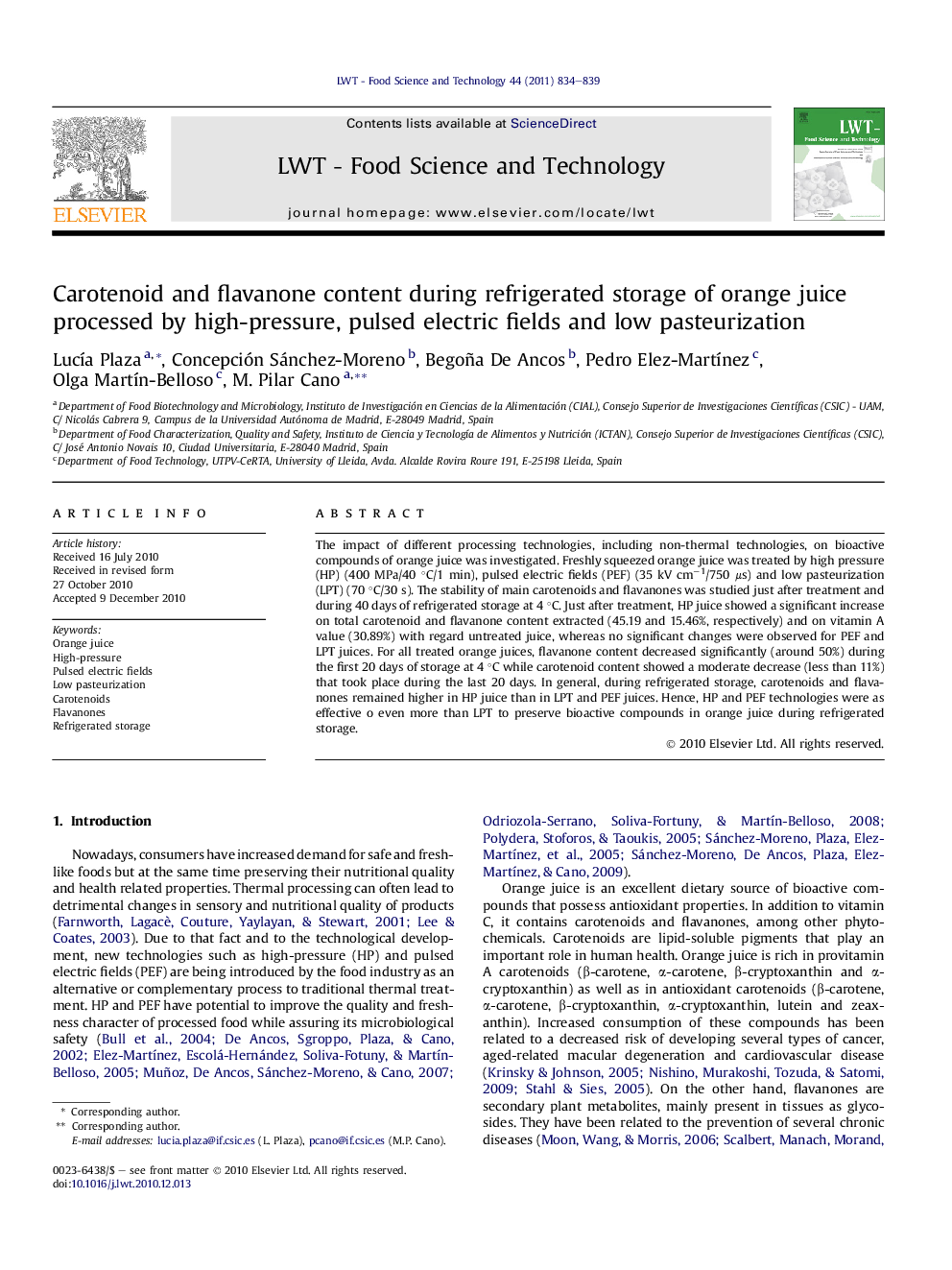| Article ID | Journal | Published Year | Pages | File Type |
|---|---|---|---|---|
| 4564332 | LWT - Food Science and Technology | 2011 | 6 Pages |
The impact of different processing technologies, including non-thermal technologies, on bioactive compounds of orange juice was investigated. Freshly squeezed orange juice was treated by high pressure (HP) (400 MPa/40 °C/1 min), pulsed electric fields (PEF) (35 kV cm−1/750 μs) and low pasteurization (LPT) (70 °C/30 s). The stability of main carotenoids and flavanones was studied just after treatment and during 40 days of refrigerated storage at 4 °C. Just after treatment, HP juice showed a significant increase on total carotenoid and flavanone content extracted (45.19 and 15.46%, respectively) and on vitamin A value (30.89%) with regard untreated juice, whereas no significant changes were observed for PEF and LPT juices. For all treated orange juices, flavanone content decreased significantly (around 50%) during the first 20 days of storage at 4 °C while carotenoid content showed a moderate decrease (less than 11%) that took place during the last 20 days. In general, during refrigerated storage, carotenoids and flavanones remained higher in HP juice than in LPT and PEF juices. Hence, HP and PEF technologies were as effective o even more than LPT to preserve bioactive compounds in orange juice during refrigerated storage.
